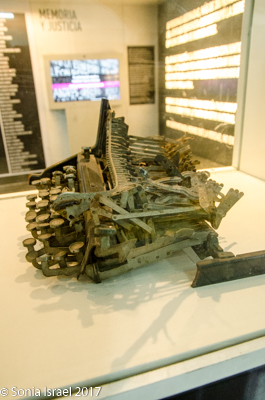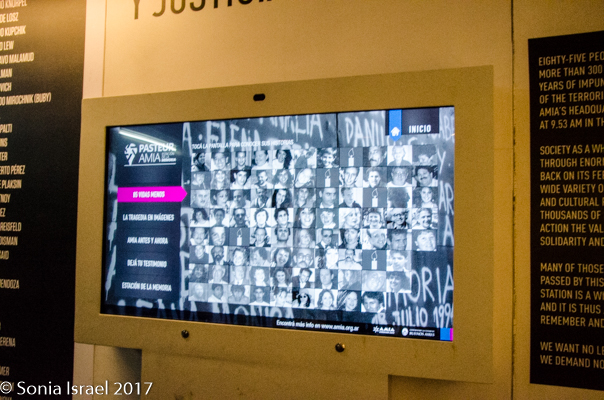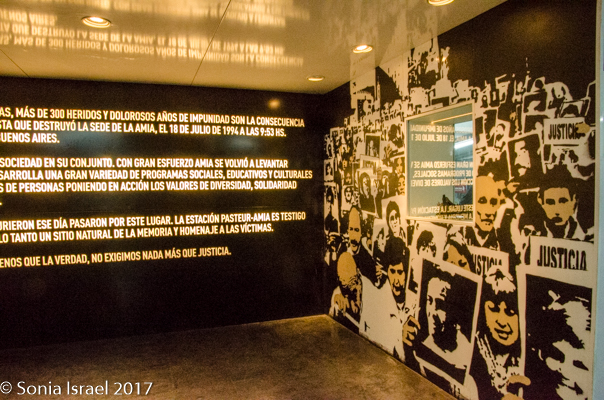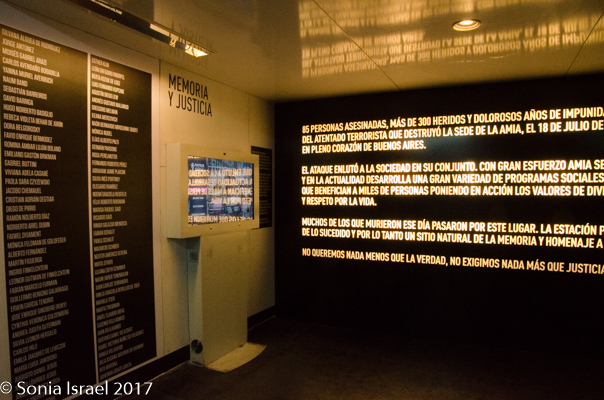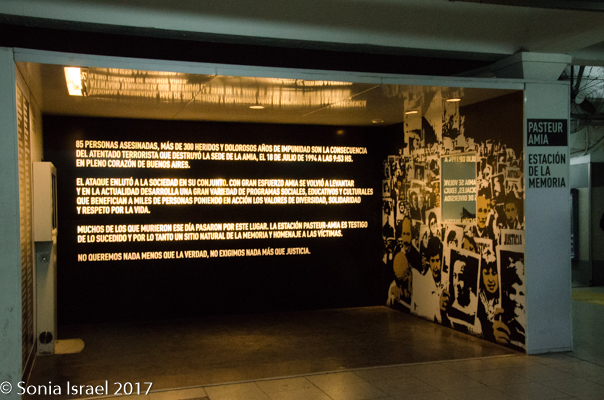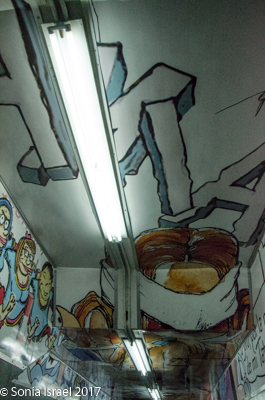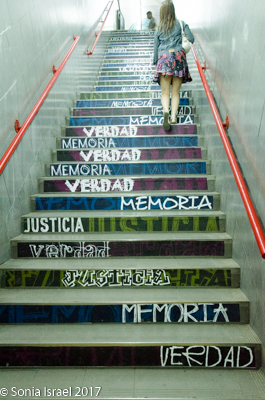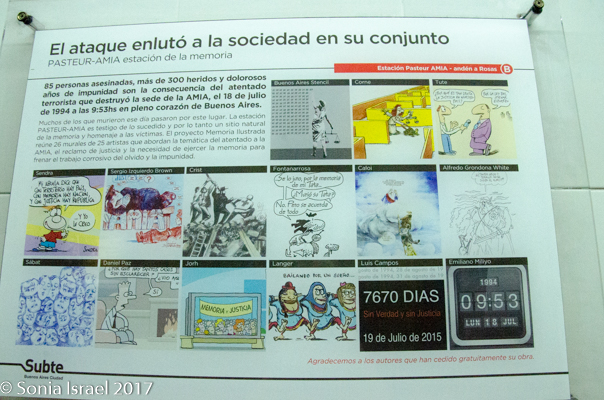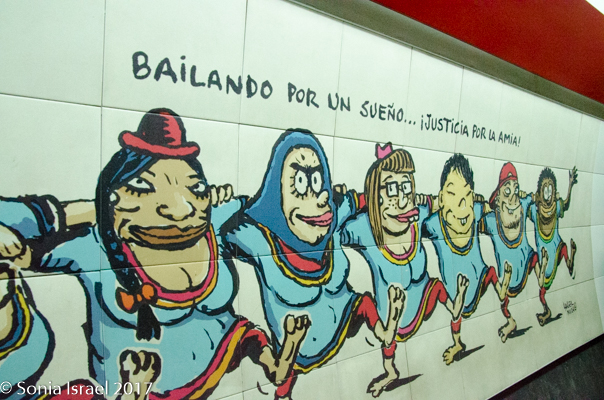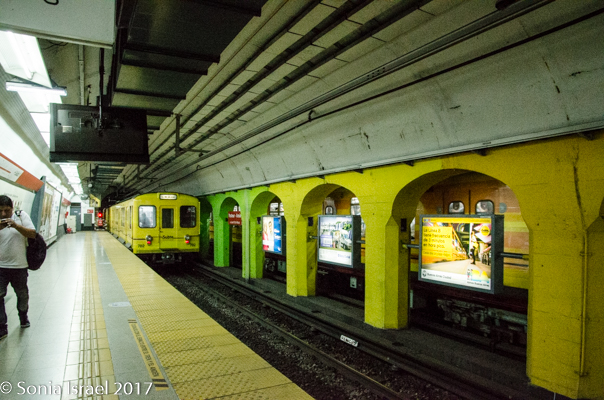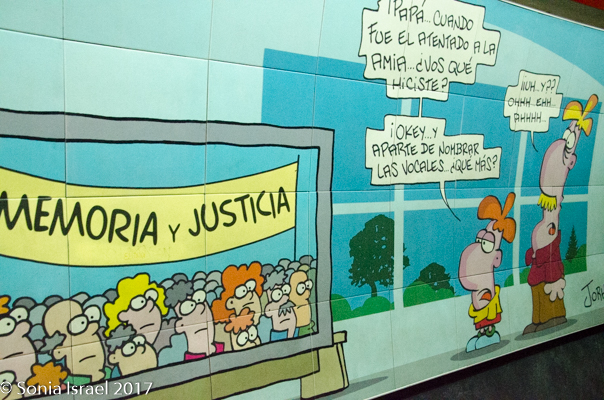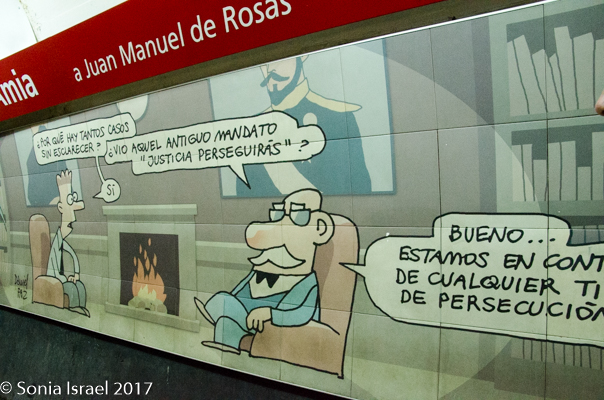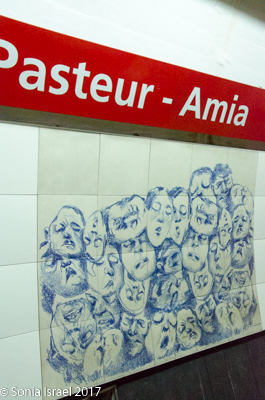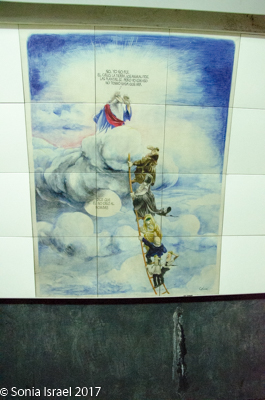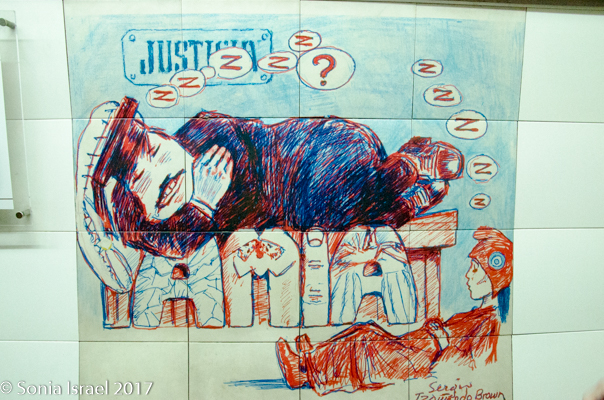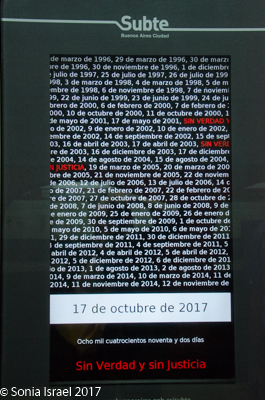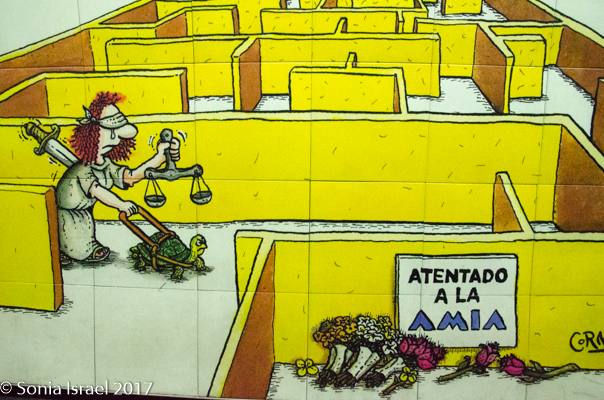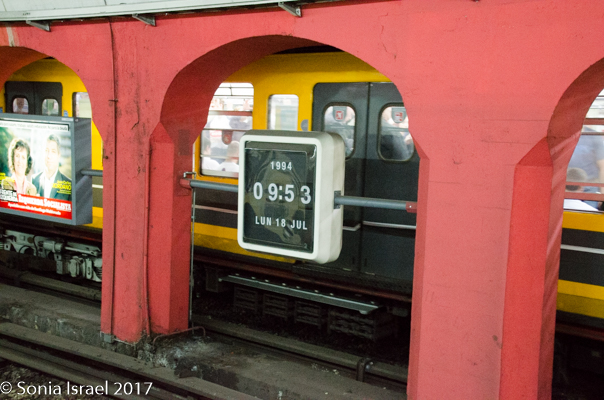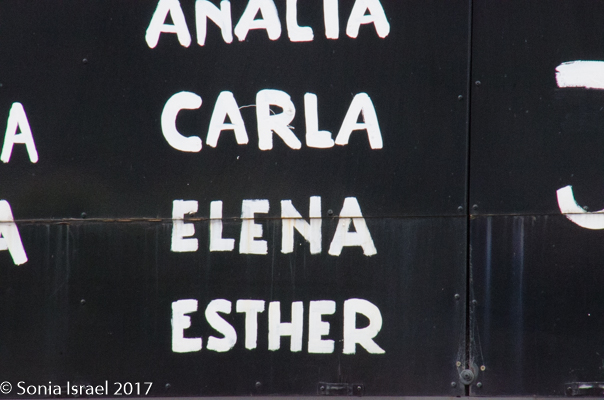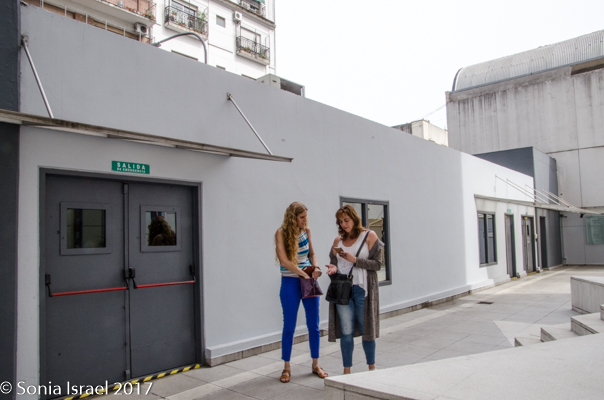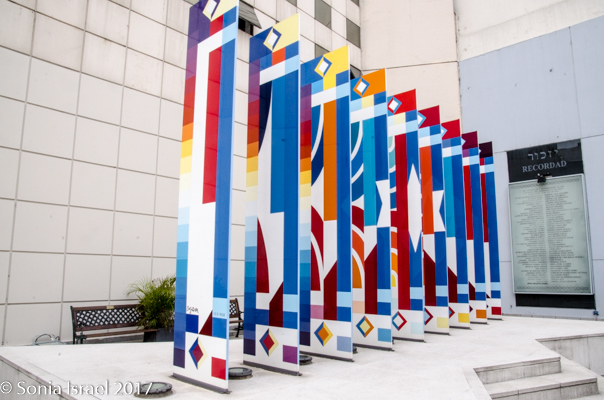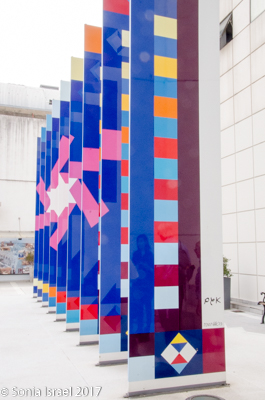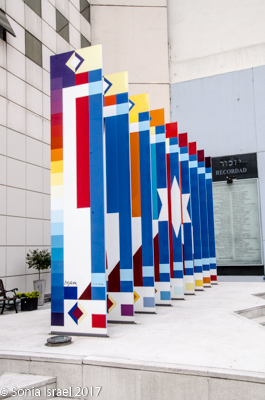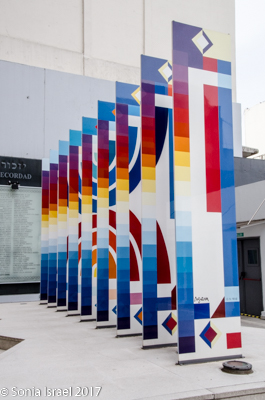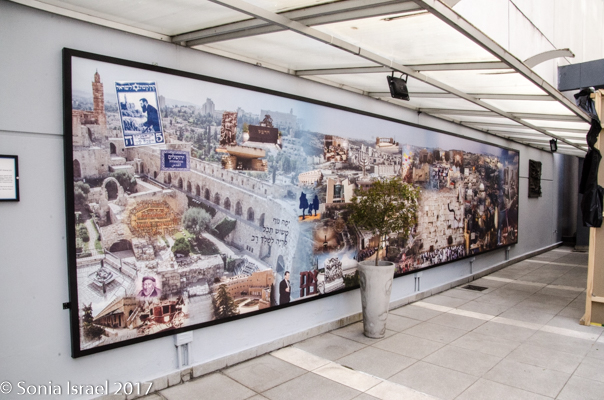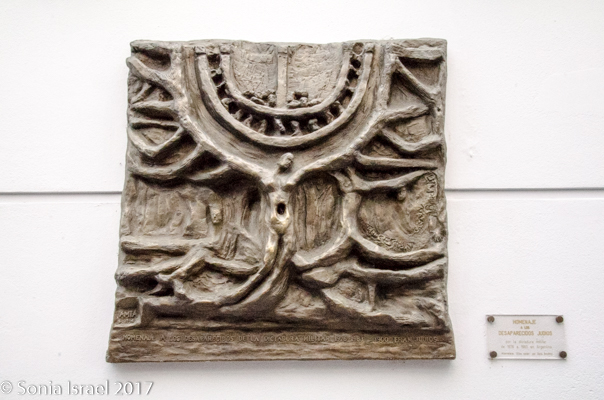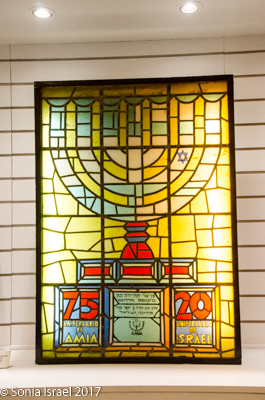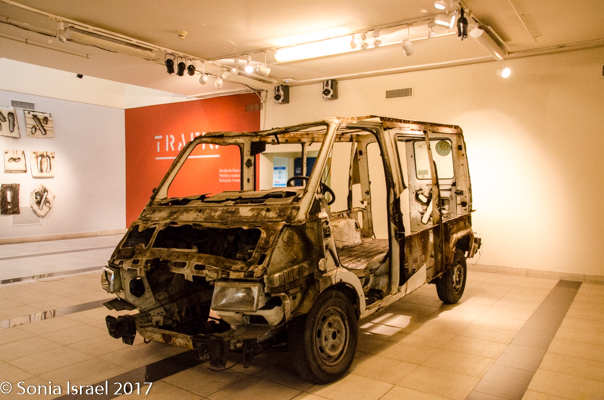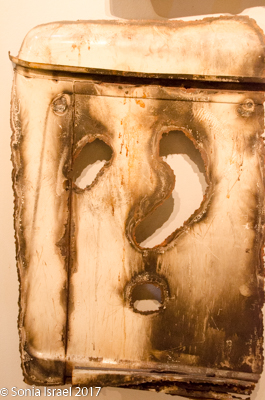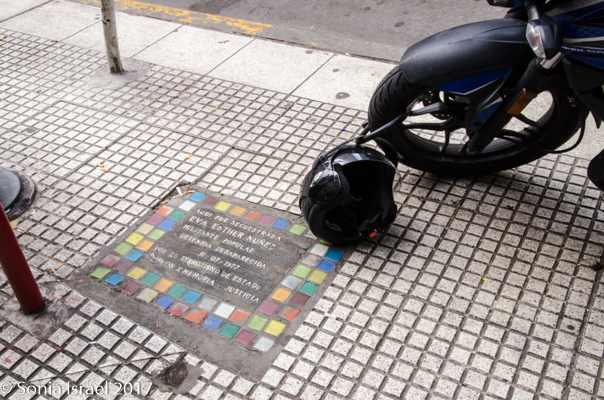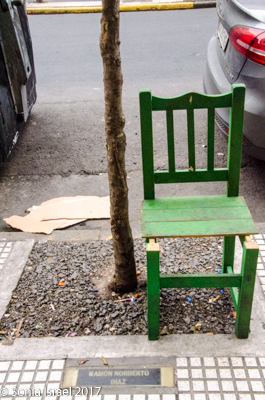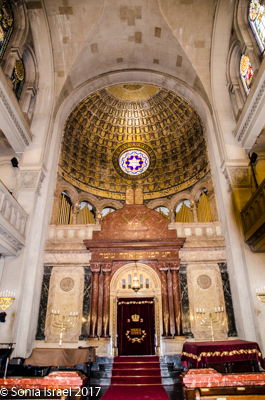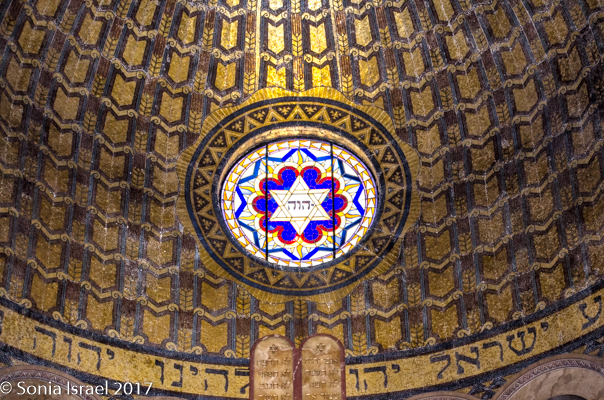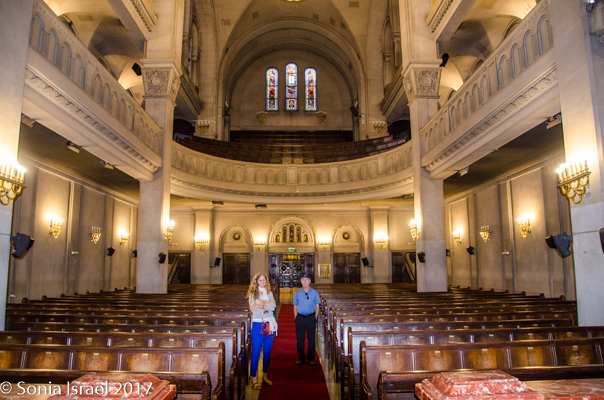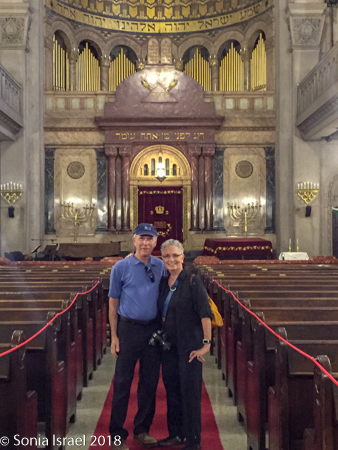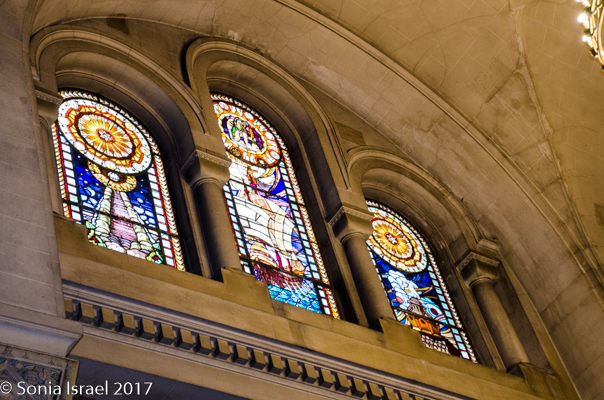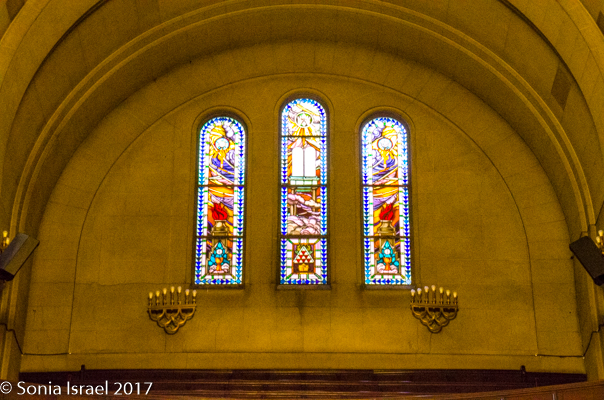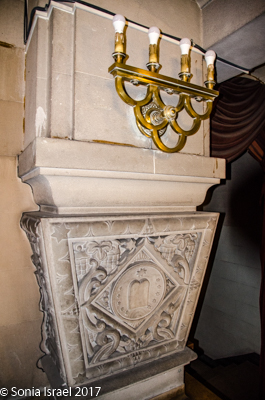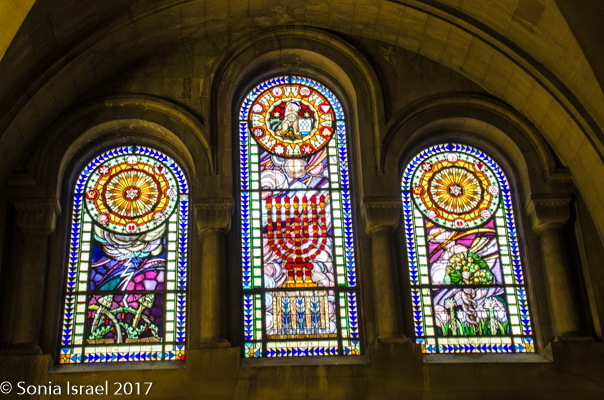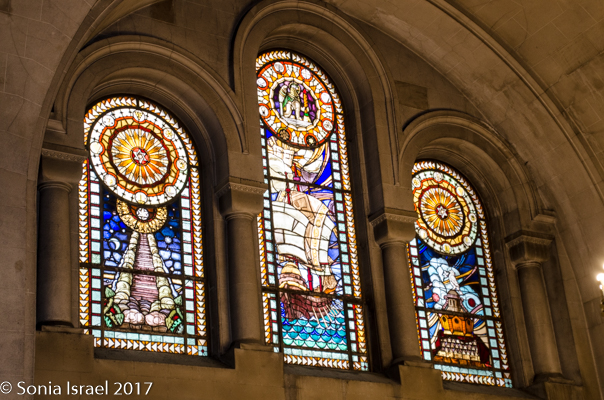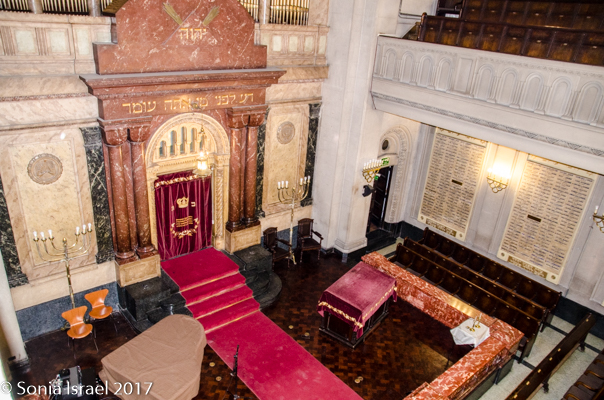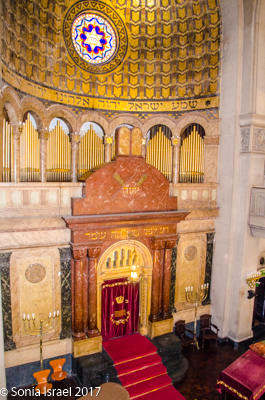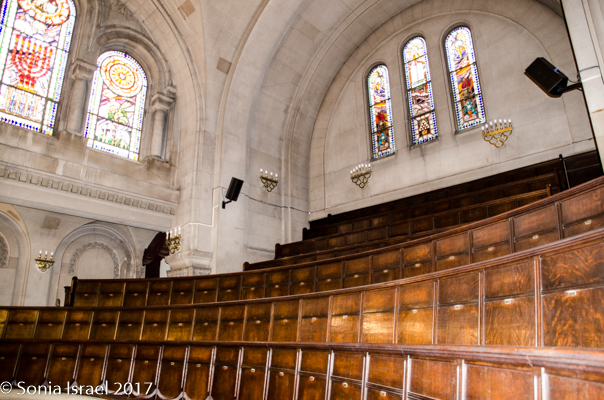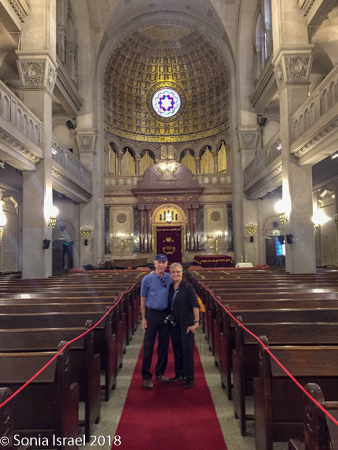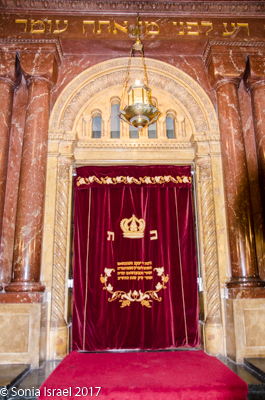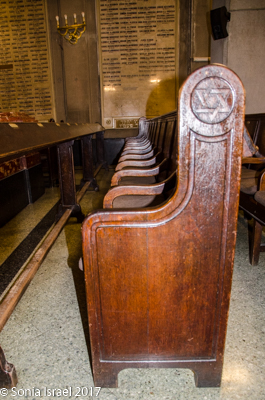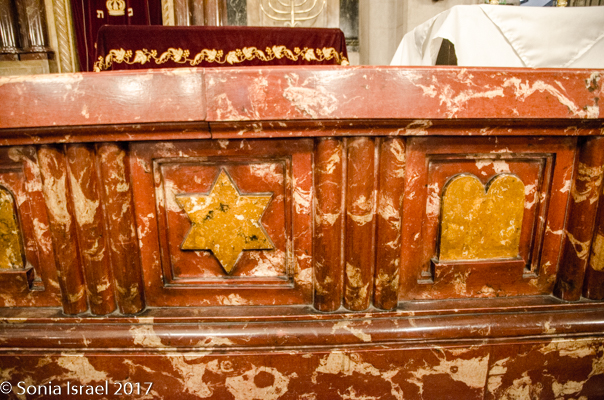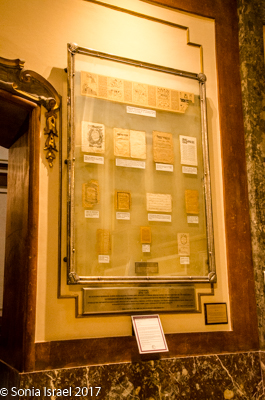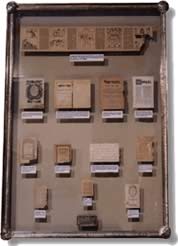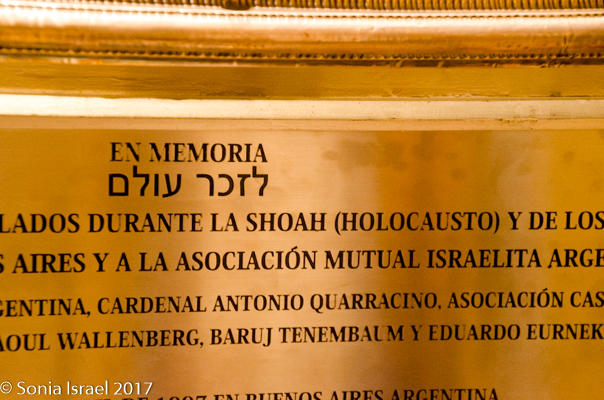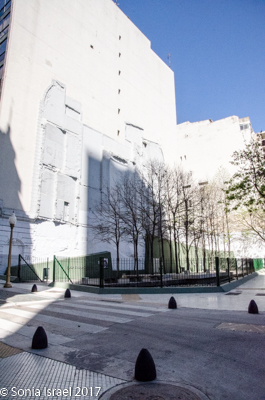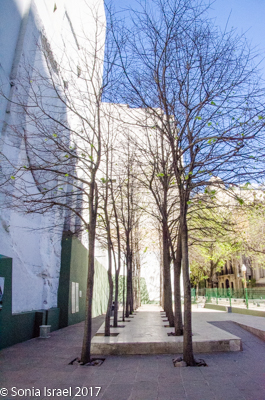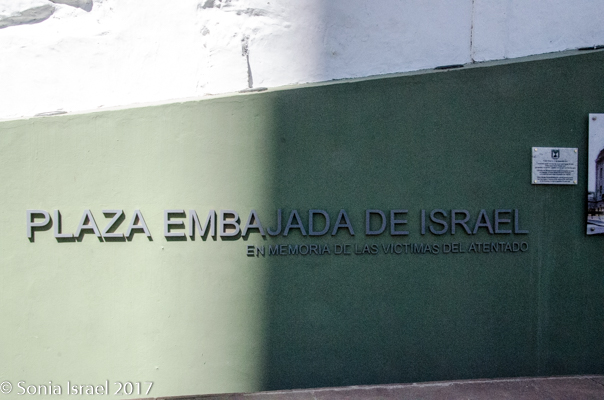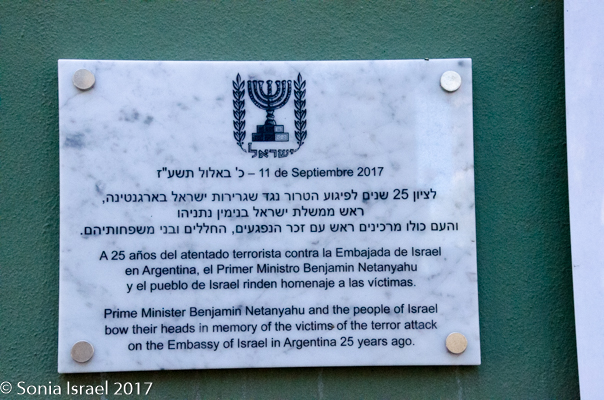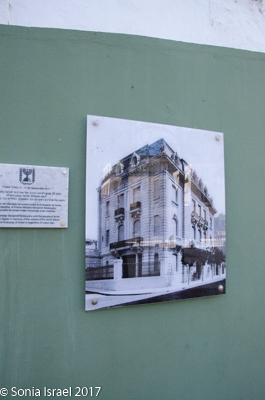Oct 17, 2017
Jewish Buenos Aires
This morning, after breakfast, our guide, Jessica Cymerman, and our driver met us. I don’t usually use last names in my blog, to protect people’s privacy. But Jessica was such a terrific guide, and she is listed on TripAdvisor, so I want to give her a shout out. Jessica grew up in Buenos Aires (BA) and was going to take us on primarily a Jewish tour of the city. There is a lot of Jewish history here.
Jewish Gauchos
When the Jews were expelled from Spain in the 1400-1500s, one of their destinations was Argentina. But it wasn’t until the early 1800s that an organized Jewish community began, coming from France and other parts of Western Europe. In part this was because in 1876 the Argentinian government passed legislation to encourage European immigration, including Jews. Many of these Jewish immigrants earned their living as farmers, working the land and were known as Jewish gauchos, i.e., Jewish cowboys. The first Jewish community was the colony of Moises Ville. It was supposed to be called Kiryat Moshe (Town of Moses), but the name was Hispanized in the official documents. But by 1935, most of the Jews had moved into BA. The total population grew from 2 million to almost 8 million with over 1000,000 Ashkenazy Jews.
The Growth of Jewish Life
The first synagogue was built in 1875. Jewish cultural and religious organizations flourished, there was a Yiddish newspaper and theater, a Jewish hospital and multiple Zionist organizations. There are about 70 synagogues in BA today but the majority are conservative or orthodox, with only 3 reform synagogues. Among some of the most spectacular synagogues here are the Grand Temple of Paso, considered one of the most beautiful in South American and Yesod Hadath, a large Sephardic synagogue dating to 1920. Another famous synagogue is in the area, the Sinagoga de la Congregación Israelita (commonly called ‘Libertad’).
Juan Peron and Jewish Rights
One of the more delicate times for the Jews of Argentina was in the mid-1940s, just post-WWII when at least 180 Nazis were permitted to flee to Argentina. In 1938 Argentina had essentially closed its doors to Jewish immigration and all passports were stamped with the Star of David. Juan Peron, who was at the height of his power, publicly expressed sympathy for Jewish rights. He was the first Latin American leader to acknowledge the State of Israel, with diplomatic relations beginning in 1949. He was also the first Argentine leader to seek out Jews to act as government advisers and permit them to hold office. But then during the mid-1970s-early 1980s, immigration was again limited and Argentina became a hostile environment. During the military junta years (see post called Buenos Aires – so much do see, do and eat), about 30,000 Argentinians “disappeared,” and 1,900 of them were Jewish. In the 1990s, during President Menem’s term, a law was passed making anti-Semitism illegal. But the population decreased some more during the financial crisis of 2011.
Jewish Life Today
Today there are about 250,000 Jews, most of whom are quite secular. The majority of the Jewish population lives in Once, Palermo or Villa Crespo (which Jessica told us they call kreplach which is like a Jewish wonton). Most of the current Jewish population is still Ashkenazi (of European origin) while the Sephardic (of Spanish, Middle East or African origin) are in the minority. Like everywhere in the world, there is little interaction between the two sects. Although many Jews emigrated to Israel and Europe in the 1970s and 1980s to escape the military junta, Argentina still has the largest Jewish population in all of Latin America, the third largest in South America and the 7th largest in the world outside of Israel. Major Jewish holidays are recognized by the government and Jews are authorized to have two days of vacation for the Jewish holidays.
We drove through the neighborhoods of Onse and Crescpo. We drove past the former Avasto Market (a Jewish market developed by an Orthodox Jew) that is now a shopping mall that houses the only kosher McDonalds outside of Israel. Although very Jewish, this area is not at all orthodox. The majority of Jewish children go to Jewish day schools and all of them learn Hebrew. Until a few years ago, they also learned Yiddish. There is an ORT school (ORT is the world’s largest Jewish education and vocational training non-governmental organization) which is so popular that many non-Jewish children also attend.
The Onse (named for how near it is to the old 11 de Septiemb re market), is where you are likely to see more of the orthodox Jews (“black hats“). This is all the garment district with shop after shop of fabric and clothes. All the stores have mezuzahs on their doors.
re market), is where you are likely to see more of the orthodox Jews (“black hats“). This is all the garment district with shop after shop of fabric and clothes. All the stores have mezuzahs on their doors.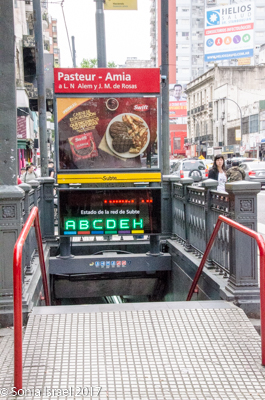
Our first stop was a subway station. But not just any subway station. The Pasteur-Amia line B subway station. But to understand why, you first need to understand about the terrorist attacks that took place.
The AMIA Bombing
As I wrote below, there was an attack on the Israeli Embassy in 1992. But in July of 1994, just two years later, a truck loaded with explosives drove into the seven-story AMIA building (Asociación Mutual Israelita Argentina or Argentine Israelite Mutual Association), the Jewish Community Center of the Jewish community in Buenos Aires. Eighty-five, mostly Jewish people, died and around 300 were injured.
The story of the AMIA bombing is not yet over. The government and Argentinian society in general demonstrated its support for the Jewish community in the aftermath of these events, yet no one has ever been held responsible for the crimes. And then, in 2015, the prosecutor in the AMIA case, Alberto Nisman, mysteriously died after spending 13 years investigating the case. His mysterious death occurred one day before he was to present evidence in a closed-door congressional hearing implicating President Cristina Fernández de Kirchner and other officials for allegedly participating in a cover-up for Iranian officials suspected in orchestrating the attack, in exchange for much-needed oil. His death became a politically charged controversy with the Fernandez allies claiming that he killed himself because he couldn’t back up his allegations and the others insisting he had been murdered. This triggered the anti-government protests ahead of the 2015 presidential election. And now, two years later, in November of 2017, there has been a break-through. The investigation had been turned over from the police, who had concluded that there was no sign of anyone else being present when Nisman died and who had been accused of mishandling evidence, to a multidisciplinary border police team. This team recently reported that Nisman had been by two people who drugged him and placed him in front of his bathtub. While one of the attackers held him under the armpits “as in a hug” the other placed the gun on his head and shot him. The new report concludes that the attackers tried to stage a suicide, but it notes that other experts throughout the series of investigations never found any traces of gunpowder on Nisman’s hands. This was quite a break-through in the case and hopefully, in the coming months, they will figure out who was behind Nisman’s murder.
The Pasteur-AMIA line B subway station
So, why the subway station? The entire station is covered in murals and memorials remembering the AMIA attack.
On the first level down is the actual memorial complete with names and photographs of those that died, the story behind it, a typewriter that melted (seeing an actual object makes it so much more real). The introductory sign begins with: “Eighty-five people murdered, more than 300 wounded and painful years of impunity are the aftermath of the terrorist attack that destroyed AMIS’s headquarters on July 18, 1994 at 9:53 AM in the heart of Buenos Aires.” And everyone that walks into that subway station has to walk by it and be reminded of that terrorist act.
But it does not end there. As you step on to the escalator to head down to the subway platform, the ceiling above you and the walls surrounding you are painted with murals reflecting what happened.
And then once you step onto the platform, the walls in both directions are covered with drawings, paintings and photos by 25 artists honoring those that died and criticizing the government for how little has been done to solve the attack. There is a clock frozen in time, at the moment the car rammed into the building and exploded.
Although everything written here is in Spanish, it remains very moving. Jessica translated and explained some of the works for us. We walked slowly past each one trying to fathom the horror of what had happened.
And that was just the beginning as the next stop was the AMIA itself, just 200 yards away.
AMIA – Asociación Mutual Israelita Argentina (Argentine Israelite Mutual Association)
AMIA is still very active, not having been stopped or slowed down by the attack. It is still an important center for the Jewish community, with education, employment, and cultural and arts programming as well as programs for children and an online TV program.
The outside of the building is surrounded by concrete blocks and there are armed officers standing around. In other words, security is now very tight. How sad that we have to live that way. On the wall of the building is a black mural with the names of those that were killed written in white. I stopped and read each one. We owe them at least that.
Agam and the Monument to the Memory of the Victims
When you are allowed entry to the compound, you walk through steel doors into a courtyard with an Agam sculpture as its centerpiece. Yacov Agam, a famous Israeli artist known for his kinetic art, designed this sculpture as a tribute and memorial to the victims of the bombing, the Monument to the Memory of the Victims of the Terrorist Attack on AMIA.
The base of this monument is a large, stepped Magen David (Jewish star). There are 9 vertical panels set on the top of the steps and each is so colorful with triangles and rectangles that form shapes, and as with most of Agam’s works, as you walk around and look at it from different angles, you see a whole different pattern. The vibrant colors are almost jarring when you think about the horror that stimulated this. But then you have to also remember the present. Life goes on. Life has to go on and we get stronger even though we are mourning. It is symbolizing the innate ability of people to cope with and adapt to change.
There is a story associated with each of nine panels and another story with the view of each panel. The stories begin with the chaos surrounding the explosion and end with the strengthening and renewed hope of the Jewish community: Destruction, Chanukah, a white Magen David, rainbow, menorah, multiple colored Magen David, and finally, the symbol of AMIA. Our guide told us that this is a “visual prayer” that has become a symbol against terrorism. “It is a permanent expression of the Jewish people’s struggle for truth, justice, and peace.” It also “bears witness to the reconstruction of the Argentine Jewish community.”
The Rest of AMIA
There are also other plaques and works of art on the walls leading to the front door, including a high-relief bronze plaque that reads, “They exist. Homage to the Missing Jews during the 1976-1983 military Dictatorship of Argentina”. (Read more about the Dirty War in my post on Buenos Aires – so much to see, do and eat). The lobby has a display with a stained-glass window that survived the bombing. And down a few steps is an art gallery with art aimed at remembering what happened.
After watching a video about AMIA, both the tragedy and what they are currently doing, our tour was over. We headed back out again, noticing that on each tree along the street in front of the building, was a plaque in memory of those that were killed. This was such a traumatic event, not only for the Jewish community but also for the entire Buenos Aires community.
Templo Libertad
As I mentioned, there are about 70 synagogues in BA. We only visited one of them, Con gregation Israelita de la Republica Argentina (Synagogue of the Israelite Congregation of the Argentine Republic), also called Templo Libertad as it sits on Libertad Street. This was the first synagogue in BA, built in 1862, and thus the oldest. This Byzantine-style synagogue’s outside facade is undergoing renovation, so it was covered with scaffolds. I read that its front consists of semicircular arches with a Star of David in the center and hands associated with blessing of the Cohanim (the Priestly blessing).
gregation Israelita de la Republica Argentina (Synagogue of the Israelite Congregation of the Argentine Republic), also called Templo Libertad as it sits on Libertad Street. This was the first synagogue in BA, built in 1862, and thus the oldest. This Byzantine-style synagogue’s outside facade is undergoing renovation, so it was covered with scaffolds. I read that its front consists of semicircular arches with a Star of David in the center and hands associated with blessing of the Cohanim (the Priestly blessing).
But we could see the inside of the temple. The sanctuary is quite large, as we have seen in many synagogues in Europe. There are enough seats for 1000 congregants. The architecture of the temple is a combination of Romanesque and Byzantine with traditional Jewish motifs. Although there is a balcony which makes one think it is Orthodox, separating men and women, it is actually a conservative synagogue. The sanctuary is extravagantly decorated with ornate stone reliefs of the Ten Commandments and Jewish stars, a soaring ceiling and stained-glass windows. The apse culminates in a half dome covered in gold and in the shape of a oyster shell and is adorned with sheaves of wheat and the words of the Shma (Jewish prayer).
The ark was covered with a red, embroidered velvet curtain and there was a red carpet running down the main aisle to the ark. Next to the bima (stage), were a pair of silver Shabbat candlesticks, with a book of matches by their side. I could just picture a Jewish woman, lighting them and covering her eyes to say the prayer. The pews were carved wood with padded seats. I’m sure the regulars all have their own seats.
We spent a bit of time here, both downstairs and upstairs, taking in the beauty, imagining what it must feel like and sound like during a service when the seats are full, and the voices sing out. Unfortunately, we were not here for a Shabbat service.
The temple also houses a Jewish museum, which like all Jewish museums has mementos depicting Jewish life, but this one is also full of Jewish manuscripts, a miniature 19th bible from Poland and a typewriter in Yiddish. It also houses documents of the first Jewish settlers in Argentina, and writers and Argentine public men who belonged to that community.
Metropolitan Cathedral
From the Plaza de Mayo we walked towards the Metropolitan Cathedral (see post on “Buenos Aires – so much to see, do and eat” for more info and pictures). The Cathedral itself is quite beautiful, but we were not there because of that. We were there to see a most unusual memorial. It is a Holocaust Memorial, known as the Commemorative Mural, the only one of its kind inside a Christian Cathedral. And not only is it a Holocaust Memorial, it is also a memorial to those murdered in the two terrorist attacks against the Jewish community (Israel Embassy and AMIA). It is a large case with two glass panels set into a silver frame (with a which hold Jewish artifacts, including a menorah, Star of David and sheets from prayer books (including a Passover Haggadah) that were rescued Treblinka, Auschwitz and the Warsaw Ghetto. There is also a copy of the only stamp in Hebrew issued in Argentina. This memorial speaks to the coexistence of different groups and respect for differences in Argentina. And on the four corners of the frame are engravings of the tree of life, a Menorah, the Ten Commandments and the Star of David.
Bombing of the Israel Embassy
There is one other major monument related to Judaism, the memorial to those killed in the Israel Embassy bombing. On March 17, 1992 a suicide bomber drove a pickup truck loaded with explosives into the Israeli Embassy which stood on this spot, completely destroying it and other buildings nearby, including a Catholic Church and a school. Overall, 29 people were killed and hundreds were injured. At that point, it was Argentina’s deadliest attack. Islamic Jihad claimed responsibility for the bombing and stated that it was in retaliation for the assassination of Hezbollah Secretary General, Sayed Abbas al-Musawi. When evidence emerged in 1998 suggesting that Iran orchestrated the attack, arrest warrants were issued for six Iranian diplomats, who all promptly left Argentina. The Israeli Embassy is now in a different location in a building which it shares with other agencies, believing that there is less of a chance of getting bombed again if others could get hurt too.
The memorial plaza stands exactly where the building once stood. There are rows of twenty-one trees and seven branches in memory of those murdered. There is also a plaque listing all the names and describing the event in both Spanish and Hebrew. It felt very quiet as I stood there, the sound of the cars and street noise fading into the background. I said Kaddish (prayer for the dead) in their memory. Just senseless violence.
Final thoughts on Jewish Buenos Aires
Where ever we go in the world, we find the history of our people. We find beauty and solace. But we also find a history filled with sadness and horror and terror. I’m ready for the world to become a more sane place.


